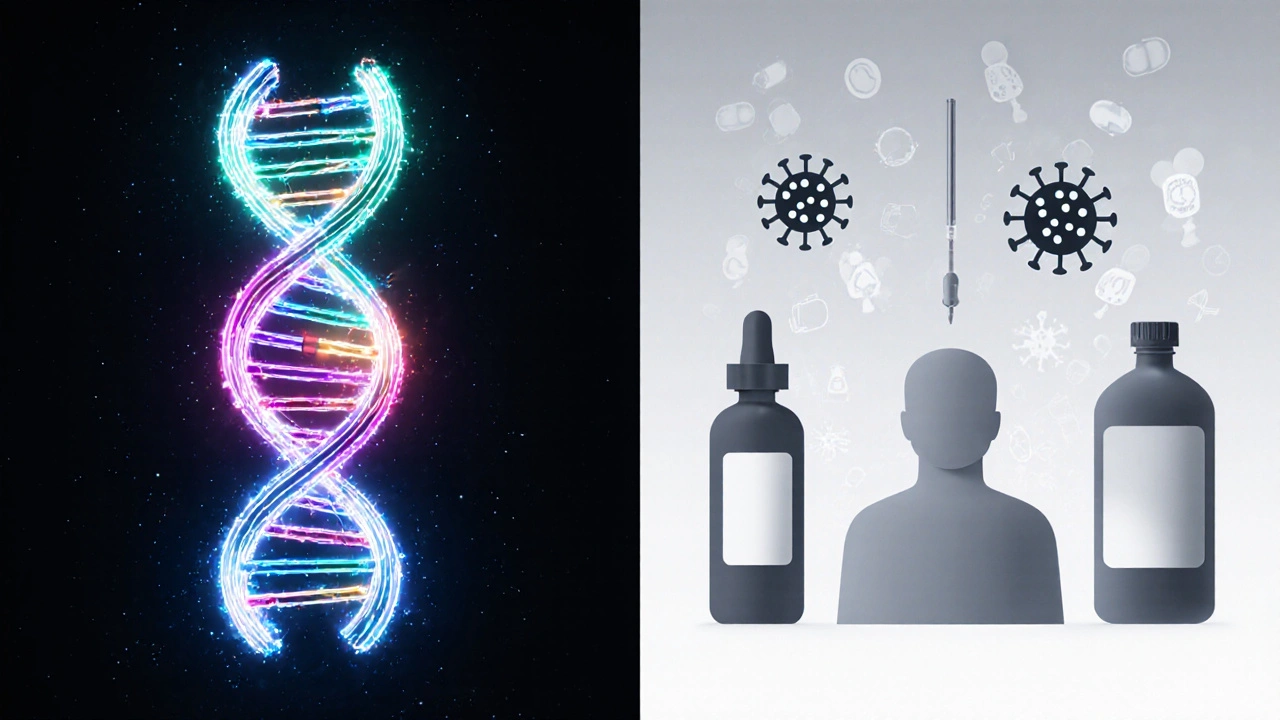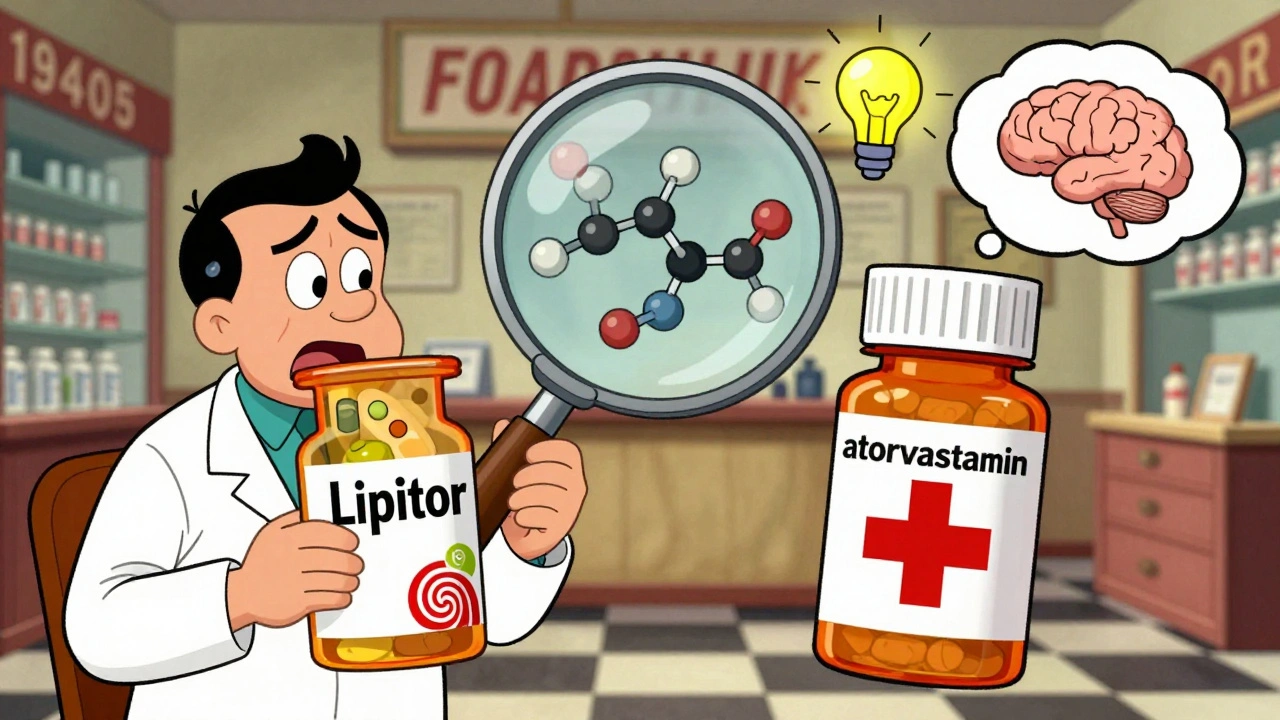Immunodeficiency Risk Assessment Tool
Symptom Assessment
This tool helps identify potential signs of immunodeficiency. It is not a medical diagnosis.
When your body’s defense network can’t keep up with everyday germs, even a simple cold can feel like a major battle. That’s what doctors call immunodeficiency - a condition where the immune system is weakened or missing key components. In this guide we’ll break down the core ideas, show how to spot the warning signs, and explain the most common ways to manage the problem.
What Is Immunodeficiency?
Immunodeficiency is a disorder in which the immune system’s ability to fight infections and disease is reduced or absent. It can affect anyone, but the underlying cause determines whether it shows up at birth or later in life.
Types of Immunodeficiency
Broadly, immunodeficiency falls into two camps: primary (inherited) and secondary (acquired). Both weaken the same defenses, yet they differ in origin, typical age of onset, and treatment approach.
Primary Immunodeficiency (PID)
Primary immunodeficiency is a group of more than 400 genetic disorders that impair immune function from birth. Because the defect is baked into the DNA, symptoms often appear in early childhood, though milder forms can stay hidden until adulthood.
One of the most common PIDs is Common Variable Immunodeficiency (CVID) a disorder characterized by low levels of immunoglobulins and recurrent infections. CVID illustrates how a single genetic variation can disrupt the production of antibodies, the proteins that tag microbes for destruction.
Secondary Immunodeficiency
Secondary immunodeficiency is an immune weakness that develops later due to external factors such as infections, medications, or chronic diseases. Unlike primary forms, this type is often reversible if the underlying cause is treated.
Common culprits include HIV infection, chemotherapy, long‑term steroids, and malnutrition. In each case the immune system is not damaged at the genetic level but is temporarily suppressed.
How the Immune System Works
To understand why immunodeficiency matters, it helps to know the basic players.
- White blood cells (WBC) the circulating troops that detect and respond to pathogens
- T cells cell‑mediated defenders that kill infected cells and coordinate the immune response
- B cells antibody‑producing cells that mark invaders for removal
- Antibodies Y‑shaped proteins that neutralize viruses and bacteria
When any of these components fail-whether because of a missing gene, a drug‑induced suppression, or an infection-the body’s ability to clear pathogens drops dramatically.

Common Signs and Symptoms
Because the immune system protects us from a huge variety of germs, the symptom picture can be wide. Typical clues include:
- Frequent upper‑respiratory infections (more than 6 per year)
- Chronic sinusitis or ear infections
- Recurrent gastrointestinal infections, especially with Giardia or Cryptosporidium
- Pneumonia that requires hospitalization
- Unusual infections like deep‑skin abscesses, molluscum contagiosum, or severe viral warts
- Persistent fatigue and poor wound healing
When symptoms pop up early in life and are unusually severe, a primary form is more likely. Late‑onset, especially after a new medication or a known disease, points toward secondary.
Diagnosing Immunodeficiency
Diagnosing is a step‑by‑step process that starts with a careful medical history and physical exam. The next moves involve lab tests that quantify immune components.
- Complete blood count (CBC) - looks at overall white‑blood‑cell levels.
- Quantitative immunoglobulin panel - measures IgG, IgA, IgM, and sometimes IgE to spot antibody deficits.
- Specific antibody response - evaluates how well the body produces new antibodies after vaccination (e.g., tetanus, pneumococcal).
- Flow cytometry - counts T‑cell, B‑cell, and NK‑cell subsets to spot cellular deficiencies.
- Genetic testing - increasingly used for primary immunodeficiencies; panels now cover over 400 known genes.
Specialist referral to a clinical immunologist is advisable once the initial screen hints at a significant abnormality.
Treatment Options
Therapy depends on whether the deficiency is primary or secondary, but the goals stay the same: prevent infections, replace missing components, and boost overall immunity.
| Aspect | Primary | Secondary |
|---|---|---|
| Cause | Genetic mutation | External factor (infection, drug, disease) |
| Typical onset | Childhood or early adulthood | Any age, often after exposure |
| Reversibility | Rarely curable; management lifelong | Often reversible when trigger removed |
| Key therapies | Immunoglobulin replacement, stem‑cell transplant, gene therapy | Treat underlying cause, adjust meds, prophylactic antibiotics |
For many primary disorders, immunoglobulin replacement therapy delivers pooled antibodies via IV or subcutaneous infusion to boost the patient’s antibody pool. This can cut infection rates by up to 70% in severe cases.
Stem‑cell transplantation offers a potential cure for certain severe combined immunodeficiencies, though the procedure carries significant risk and requires a matched donor.
Newer approaches such as gene therapy uses viral vectors to correct defective immune genes at the DNA level are showing promise in early trials for diseases like ADA‑deficient SCID.
Secondary cases often improve once the trigger is removed. For example, tapering steroids or switching from a broad‑spectrum chemotherapy regimen can restore normal white‑cell counts within weeks.

Living With an Immunodeficiency
Beyond medical treatment, daily habits make a big difference.
- Vaccination strategy: Avoid live vaccines (e.g., MMR, varicella) if the immune system is severely compromised, but stay up‑to‑date on inactivated vaccines like flu and pneumococcal.
- Hygiene and environment: Frequent hand‑washing, avoiding crowded places during peak infection seasons, and using air purifiers at home can lower exposure.
- Nutrition: A balanced diet rich in vitamins A, C, D, and zinc supports immune function. Some patients benefit from oral probiotic supplements.
- Regular monitoring: Quarterly blood work helps catch early drops in immunoglobulin levels or new infections before they become serious.
- Support networks: Connecting with patient groups (e.g., Immune Deficiency Foundation) provides emotional support and practical tips.
Most people with well‑managed immunodeficiency lead full, active lives. The key is proactive care and open communication with healthcare providers.
Key Takeaways
Understanding the difference between primary and secondary immunodeficiency helps you ask the right questions at the doctor’s office. Early diagnosis, targeted labs, and personalized therapy can dramatically reduce infection risk. While genetics drive many cases, lifestyle, vaccination, and regular monitoring keep the immune system as robust as possible.
Frequently Asked Questions
Can immunodeficiency be cured?
Most primary immunodeficiencies are lifelong, but treatments like immunoglobulin replacement, stem‑cell transplant, or emerging gene‑therapy can provide long‑term remission. Secondary forms are often reversible once the underlying cause is addressed.
What infections are most common in people with immunodeficiency?
Respiratory infections (pneumonia, sinusitis), ear infections, gastrointestinal parasites, and skin abscesses are frequent. Some patients also develop unusual viral warts or persistent fungal infections.
Should I get vaccinated if I have an immunodeficiency?
Inactivated vaccines (flu, COVID‑19, pneumococcal) are generally safe and recommended. Live vaccines should be avoided unless a specialist confirms adequate immunity.
How is immunoglobulin replacement administered?
It can be given intravenously (IVIG) every 3-4 weeks or subcutaneously (SCIG) at home weekly. Both methods raise antibody levels and cut infection rates dramatically.
Is genetic testing necessary for diagnosis?
If a primary immunodeficiency is suspected-especially with a family history or early‑onset severe infections-genetic panels are now the gold standard. They help pinpoint the exact defect and guide therapy.







Suzi Dronzek
The sheer prevalence of self‑diagnosing amateurs flirting with immunodeficiency checklists is a testament to our collective hubris.
It is morally indefensible to parade a simplistic web tool as a surrogate for professional medical counsel.
Every bullet point that lists recurrent sinusitis or fatigue is being weaponized in a culture that glorifies victimhood without accountability.
Those who neglect basic hygiene, fail to vaccinate, or indulge in reckless lifestyle choices cannot blame a digital questionnaire for their misfortunes.
Moreover, the reductionist scoring algorithm implicitly endorses a binary view of health that erases the nuanced spectrum of immune competence.
By equating a handful of checkbox selections with a risk level, the developers betray a shallow understanding of immunology.
The medical community has long warned against over‑reliance on such tools, emphasizing that they serve only as preliminary prompts.
Yet, the glossy interface lures users into a false sense of certainty, encouraging them to self‑label as “immunodeficient” without proper labs.
This not only fuels unnecessary anxiety but also diverts scarce resources toward unwarranted consultations.
The ethical responsibility of disseminating health information obliges creators to include explicit disclaimers, which here appear as an afterthought.
Additionally, the absence of contextual guidance about genetic predisposition or environmental factors demonstrates a glaring oversight.
In a world where misinformation spreads at lightning speed, we must demand higher standards from any platform that touches upon personal health.
Readers should approach this tool with a critical eye, cross‑referencing its output with reputable sources.
Most importantly, anyone suspecting a genuine immunodeficiency should schedule an appointment with an immunologist, not rely on an online quiz.
To conclude, while the intention may be noble, the execution is fundamentally flawed and perpetuates a dangerous complacency.
Let us, therefore, prioritize evidence‑based assessment over convenient but superficial self‑evaluation.
Aakash Jadhav
Yo, ever think about how a simple checklist can feel like a cosmic oracle?
We’re out here tapping screens, hoping some tiny algorithm will tell us if our immune system is a superhero or a sidekick.
It’s wild that a few check‑boxes can spark existential dread, like we’re living in a philosophical nightmare where health is a morality play.
But hey, if it makes you glance at your own body’s drama, maybe that’s the point – to wake up from the slumber of complacency.
Just remember, the universe isn’t going to hand you a diagnosis on a QR code, you gotta seek the real sages in white coats.
Amanda Seech
I think its nice that they made it easy to use.
i tried the quiz and it felt simple enough for me.
just remember its not a real doc, so talk to a doctor if you worried.
Lisa Collie
While the creators may believe they are offering a public service, the reductionist nature of this questionnaire betrays a pretentious simplification of complex immunological pathways.
One must resist the allure of facile self‑assessment and acknowledge that true expertise resides beyond the superficial veneer of checkbox metrics.
Avinash Sinha
Behold! A digital tapestry woven with the threads of drama and color, daring to encapsulate the tempestuous saga of our immune guardians.
The symphony of symptoms dances like fireworks, each flare a testament to the body's relentless battle.
Yet, lest we be blinded by spectacle, we must remember that this kaleidoscope is but a shadow of the deeper, hidden battles waged within.